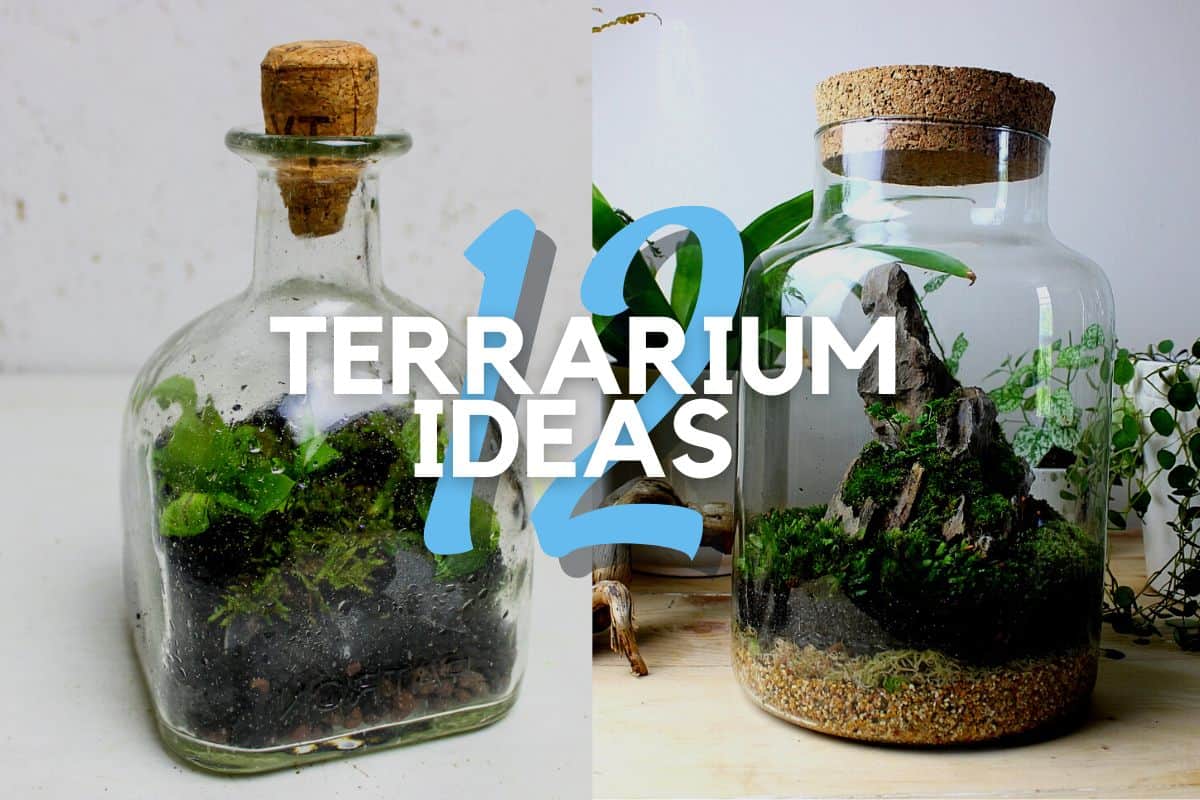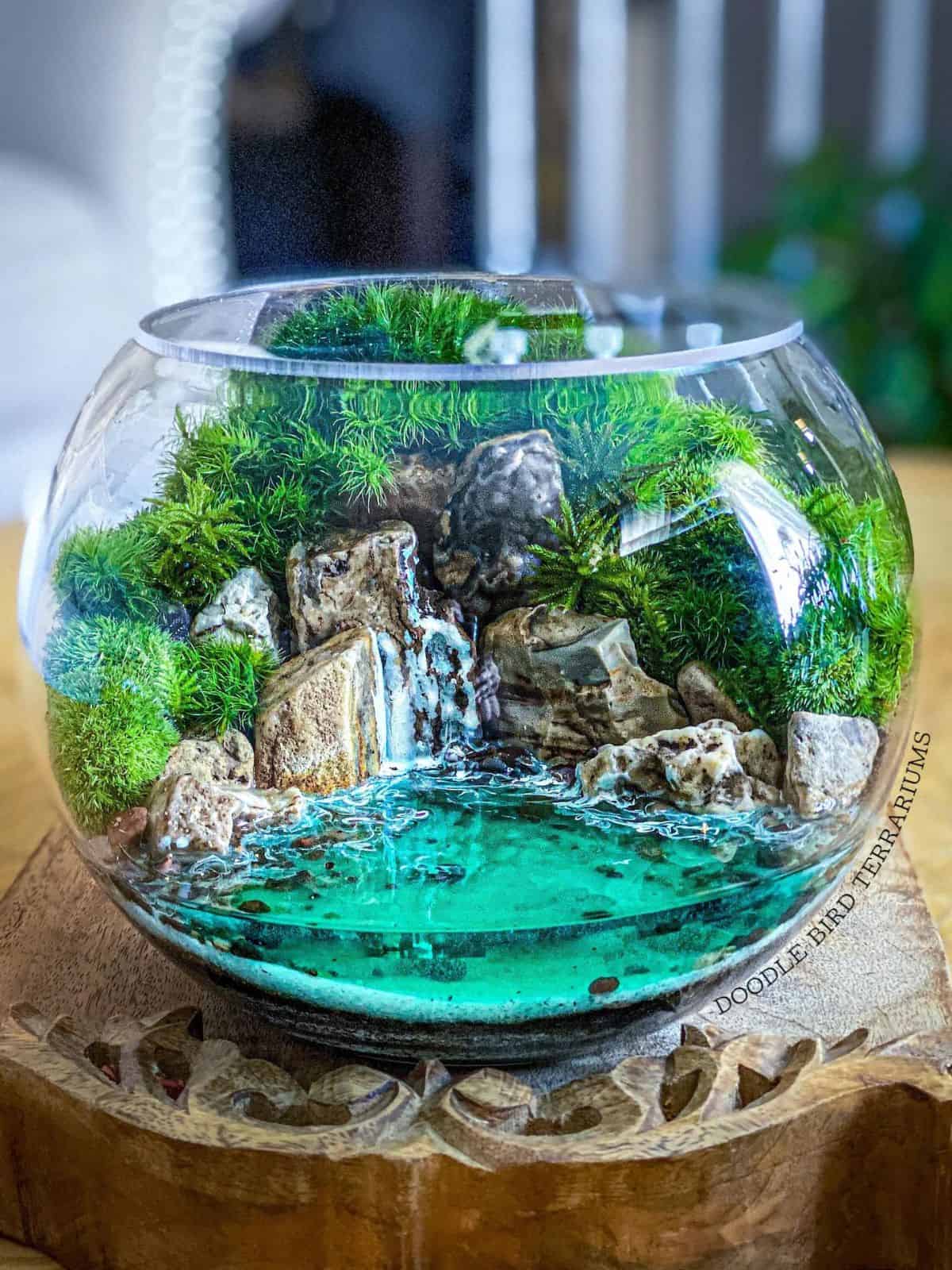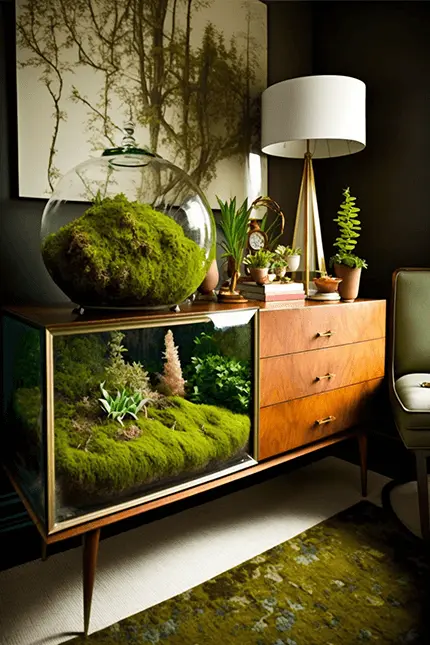Terrarium design and aesthetics focus on creating visually appealing, self-contained plant ecosystems. A well-designed terrarium enhances any interior space.
Terrariums bring a slice of nature indoors, offering a miniature ecosystem that thrives with minimal maintenance. These enclosed gardens not only serve as beautiful decor but also improve indoor air quality. Choosing the right plants, containers, and decorative elements is crucial for a balanced and captivating design.
Succulents, mosses, and ferns are popular choices due to their resilience. Glass containers allow for a clear view of the intricate plant arrangements. Creative touches like small figurines, stones, or driftwood add personality. A well-crafted terrarium can be a focal point in any room, blending nature with home aesthetics seamlessly.
Introduction To Terrariums
Terrariums are miniature gardens housed within glass containers. They offer a unique way to bring the beauty of nature indoors. These self-contained ecosystems can range from simple to elaborate. They are perfect for both beginners and experienced gardeners.
Definition And Purpose
A terrarium is a glass container housing plants and sometimes small animals. It creates a small, self-sustaining ecosystem. The glass walls allow light to enter, which helps plants grow. They also trap moisture, creating a humid environment.
The purpose of a terrarium is to provide a controlled environment for plants. This makes it easier to care for them. Terrariums can also serve decorative purposes. They bring a touch of nature into any space, adding to the room’s aesthetics.
Historical Background
Terrariums have a rich history dating back to the 19th century. They were first popularized by Dr. Nathaniel Bagshaw Ward. He accidentally created the first terrarium, known as the “Wardian case,” in 1829.
Ward discovered that plants could thrive in sealed glass containers. This led to the use of terrariums for transporting exotic plants. Since then, terrariums have evolved. They have become popular as both decorative and functional elements in homes and offices.
| Key Term | Definition |
|---|---|
| Terrarium | A glass container for growing plants and small animals. |
| Wardian case | The first terrarium, invented in 1829 by Dr. Ward. |
- Easy to maintain
- Adds beauty to any room
- Ideal for small spaces
- Choose a glass container.
- Add a layer of small stones.
- Place a layer of activated charcoal.
- Add potting soil.
- Plant your chosen plants.
- Decorate with small accessories.
Terrariums are more than just decorations. They are small, thriving ecosystems. They offer an easy way to enjoy nature indoors.
Types Of Terrariums
Terrariums come in various styles. Each type offers unique benefits and aesthetic appeal. Understanding the different types helps in creating a beautiful and thriving mini-ecosystem. Let’s explore the primary types of terrariums and their specialized designs.
Open Vs Closed Terrariums
Terrariums can be open or closed. Each type has its own set of requirements and benefits. Choosing between them depends on the plants you wish to grow and the look you want to achieve.
| Feature | Open Terrariums | Closed Terrariums |
|---|---|---|
| Humidity | Low, suitable for dry-loving plants | High, ideal for moisture-loving plants |
| Ventilation | Good airflow | Limited airflow |
| Maintenance | Requires regular watering | Self-sustaining, minimal watering |
| Plants | Succulents, cacti, air plants | Mosses, ferns, tropical plants |
Specialized Designs
Beyond the basic open and closed types, specialized terrarium designs offer unique aesthetics and functionality. These designs cater to specific themes or plant types.
- Water Terrariums: These terrariums include water features. They are ideal for aquatic plants and small fish.
- Desert Terrariums: Designed for cacti and succulents, these terrariums mimic arid environments.
- Forest Terrariums: These terrariums replicate dense forests. They are perfect for ferns and mosses.
- Hanging Terrariums: These are suspended in the air. They add a unique visual element to any space.
Each specialized design enhances the beauty of your space. They also provide a suitable environment for different types of plants.
Selecting The Right Plants
Creating a visually appealing terrarium involves selecting the right plants. The choice of plants can make or break the aesthetics of your terrarium. This section will guide you through the best plant options.
Tropical Plants
Tropical plants bring a lush, vibrant feel to your terrarium. These plants thrive in humid conditions, making them perfect for closed terrariums.
- Ferns: Ferns add a touch of greenery and are easy to maintain.
- Moss: Moss adds a soft, carpet-like texture to your terrarium.
- Orchids: Orchids add a pop of color and are great for larger terrariums.
Ensure your tropical plants get enough indirect light. Keep the soil moist for them to thrive.
Succulents And Cacti
Succulents and cacti are perfect for open terrariums. These plants thrive in dry conditions and require minimal maintenance.
- Aloe Vera: Aloe Vera is hardy and adds a unique shape to your terrarium.
- Echeveria: Echeveria comes in various colors and shapes, adding diversity.
- Haworthia: Haworthia is compact and has striking patterns, perfect for small spaces.
Place your succulents and cacti in a well-draining soil mix. Ensure they get plenty of direct sunlight to thrive.

Credit: terrariumtribe.com
Design Principles
Understanding the Design Principles of terrarium design helps create visually appealing and harmonious mini-ecosystems. These principles guide the balance, symmetry, color, and texture of your terrarium, ensuring a stunning display.
Balance And Symmetry
Balance and symmetry are crucial for creating a visually stable terrarium. There are two types of balance to consider:
- Symmetrical Balance: Both sides of the terrarium mirror each other.
- Asymmetrical Balance: Different elements balance each other through visual weight.
To achieve symmetry, place large elements centrally or pair them with smaller items. Asymmetrical designs often use contrasting sizes and shapes for interest. Balance ensures your terrarium feels harmonious and complete.
Color And Texture
Color and texture add depth and interest to your terrarium. Consider these aspects:
| Aspect | Recommendation |
|---|---|
| Color | Use a mix of greens, accent colors, and subtle hues. |
| Texture | Combine smooth leaves, rough bark, and varied surfaces. |
Colorful plants and contrasting textures make your terrarium vibrant. Use these elements wisely to create visual interest and depth.
Creating Layers
Creating layers in a terrarium is crucial for its health and look. Layers ensure proper drainage, support plant life, and add visual appeal. Each layer has a specific role in maintaining the ecosystem.
Base And Drainage
The base layer is vital for terrarium health. It prevents water from pooling and roots from rotting. Use materials like pebbles, gravel, or small stones. These materials help excess water flow away.
Here’s a simple table to understand different base materials:
| Material | Benefits |
|---|---|
| Pebbles | Excellent drainage, adds weight |
| Gravel | Good drainage, easy to find |
| Small Stones | Great drainage, aesthetic appeal |
Soil And Substrate
Next is the soil and substrate layer. This layer supports plant growth. Choose the right soil mix for your plants. For succulents, use a sandy mix. For tropical plants, use a rich, loamy mix.
Consider adding a thin layer of charcoal between the drainage and soil layers. Charcoal helps filter the water, preventing odors and bacteria. This ensures a healthier terrarium environment.
Here’s a quick checklist for soil and substrate:
- Select soil based on plant type.
- Use activated charcoal for filtration.
- Avoid using garden soil; it may contain pests.
Proper layers ensure a thriving and beautiful terrarium. Plan each layer carefully for the best results.
Incorporating Decorative Elements
Adding decorative elements to your terrarium can elevate its visual appeal. These elements can transform a simple terrarium into a work of art. They add personality and uniqueness to your design. This section explores how to incorporate stones, pebbles, and miniature figurines.
Stones And Pebbles
Stones and pebbles bring texture and depth to your terrarium. They can be strategically placed to create a natural look.
- Color: Choose stones that complement your plants.
- Size: Use a mix of small and large stones for variety.
- Placement: Arrange them to mimic natural landscapes.
Stones also help with drainage and prevent soil erosion. This keeps your plants healthy and happy.
Miniature Figurines
Miniature figurines add a whimsical touch to your terrarium. They can represent animals, fairies, or even tiny furniture.
- Theme: Choose figurines that match your terrarium theme.
- Material: Use resin or ceramic figurines for durability.
- Position: Place them where they enhance the overall design.
Figurines make your terrarium more engaging and fun. They tell a story and capture the viewer’s imagination.
Incorporating these decorative elements can transform your terrarium. It becomes a beautiful, personalized piece of art.
Maintenance Tips
Keeping your terrarium beautiful and healthy needs regular care. Learn the essential tips for maintaining your terrarium’s design and aesthetics.
Watering And Humidity
Maintaining the right water levels is crucial. Overwatering can lead to root rot. Underwatering can cause plants to wilt. Use a spray bottle for even water distribution.
Check the soil moisture regularly. Insert your finger about an inch deep. If it feels dry, it’s time to water.
Humidity is vital for certain plants. Place a small dish of water inside to boost humidity. Mist the plants lightly every few days.
Pruning And Cleaning
Pruning helps keep your terrarium neat. Remove dead leaves and trim overgrown plants. Use small scissors for precise cuts.
Clean the glass walls to ensure sunlight reaches the plants. Use a soft cloth to wipe away dust and algae. Avoid harsh chemicals; they can harm the plants.
Regular cleaning prevents mold growth. Check for any signs of mold and remove it promptly.
Showcasing Your Terrarium
Displaying your terrarium can enhance the beauty of your space. Thoughtful placement and proper lighting are essential for aesthetic appeal and plant health.
Lighting Considerations
Lighting is crucial for both plant growth and visual appeal. Natural light is ideal for most terrariums. Place your terrarium near a window with indirect sunlight.
If natural light is scarce, use artificial lighting. LED grow lights are energy-efficient and provide the right spectrum for plant growth. Avoid placing your terrarium in direct sunlight, which can overheat and damage the plants.
Placement Ideas
Choose a spot that complements your home decor. Here are some ideas:
- Living Room: Place on a coffee table or a bookshelf.
- Bedroom: Position on a nightstand for a serene ambiance.
- Office: Add to your desk to create a calming workspace.
- Kitchen: Use as a centerpiece on the dining table.
Ensure the spot is easily accessible for maintenance. Keep away from high-traffic areas to avoid accidental damage.
| Room | Suggested Placement |
|---|---|
| Living Room | Coffee table, Bookshelf |
| Bedroom | Nightstand |
| Office | Desk |
| Kitchen | Dining table |
Experiment with different spots to find the best view. A well-placed terrarium can transform your space into a green oasis.
Troubleshooting Common Issues
Terrariums can be beautiful, but sometimes problems arise. Here are solutions for common issues you might face.
Pests And Diseases
Pests and diseases can harm your terrarium plants. Inspect your plants regularly for signs of trouble.
- Aphids: Small insects that suck plant sap. Remove them with a damp cloth.
- Fungus Gnats: Small flies that live in soil. Let the soil dry out to reduce their numbers.
- Mold: White or green fuzzy growths. Increase ventilation and remove affected parts.
Overgrowth Solutions
Plants can grow too big for their terrarium. Pruning helps keep them in check.
- Use clean scissors to trim back overgrown plants.
- Remove dead or yellowing leaves.
- Replant or transfer large plants to bigger containers.
To prevent overgrowth, choose slow-growing plants. Regular maintenance ensures a healthy and beautiful terrarium.

Credit: terrariumtribe.com

Credit: dagmaramach.com
Conclusion
Creating a terrarium is both an art and a science. With thoughtful design, you can craft stunning mini-ecosystems. Remember to choose the right plants and materials. Pay attention to lighting and humidity for optimal growth. Enjoy the beauty and tranquility your terrarium brings to your living space.
Happy designing!
